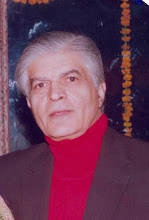
The Human Body
RESPIRATORY SYSTEM Part I
The CO2 / O2 exchange company
The bellow that keeps the internal flames alive
INTRODUCTION Clean air essential
This system carries air in and out of the lungs. In the lungs, oxygen passes into the blood and carbon dioxide passes out.
The entry, and exit points for air to this system, is the mouth and nose.
The air enters the trachea, which is joined to the smaller tubes (bronchi), that lead into small balloon like sacs (alveoli) ,in the lungs the exchange of these gases occur.
RESPIRATORY SYSTEM ROLE Oxygen required for energy fires
Breathing is as important, for sustaining life of the body cells, as the beating of the heart. Together with the function of cardiovascular system it is nature’s way of providing oxygen to the cells, so they can use sugars, and other nutrient to provide energy, and to continue to function and live.
The waste product of the cell's activity is carbon dioxide (CO2).
It is produced when glucose is used by the cells, to convert it into energy,
The carbon dioxide is eliminated from the body, by the lungs in the exhaled breath.
The air around us has about 20% oxygen (O2); the rest is nitrogen and carbon dioxide.
This air is taken in through the nose and mouth.
This air with fresh oxygen reaches the lungs where the gas exchange can take place.
-The blood in the tissues takes up CO2 and gives up O2.
-The blood in the lungs, takes up the fresh oxygen from the alveoli, and releases the carbon dioxide into the alveoli.
Breathing Factoids.
You need oxygen all the time
- You will probably take about 600 million breaths if you live to the age of 75.
- Every minute you breathe, you take in about 6 liters of air.
- A normal breath takes in about 0.4 liters of air. A deep breath can take up to 4 liters.
- On average, you breathe about 13-17 times a minute. But if you run hard, you may have to breathe up to 80 times a minute.
- Newborn babies breathe about 40 times a minute.
- Breathing is called respiration. The way cells burn up glucose using oxygen is called cellular respiration.
- Air normally contains about 21% oxygen, and about 0.03% carbon dioxide.
The air you breathe out has about 0.6% carbon dioxide - not quite enough to poison anyone with your breath!
CONTROL OF BREATHING Automatic regulation with variation
The Nervous System controls the contraction and relaxation of the intercostals muscle (muscle in between ribs), and the diaphragm
This message is received from the respiratory centre in the brain.
The spinal nerves carry the message to the intercostals muscles.
The Phrenic nerve carries the message to the diaphragm.
The inhaled air increases the stretch, in the stretch receptors, of the lung,
This message from this receptor pass on to the respiratory centre and the message for inspiration are stopped, and expiration begins.
The carbon dioxide in the blood is also an important stimulus to respiration.
There are centers for checking carbon dioxide level in the blood and they are present in the brain near the respiratory centre.
They are also present in the aorta and the carotid artery.
If the carbon dioxide level rises in the blood, both the rate and the depth of the breathing increase.
Oxygen levels are also checked and signal sent as a result but the carbon dioxide level sends the stronger message.
Any question should be address to: consensusdc@yahoo.co.in you will receive further information regarding your question.





No comments:
Post a Comment